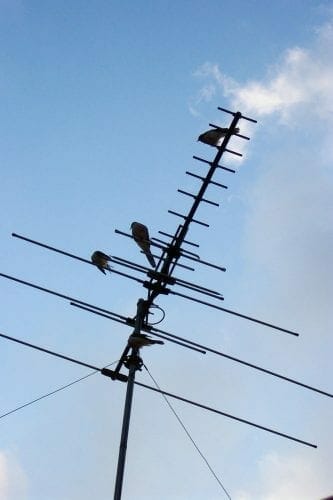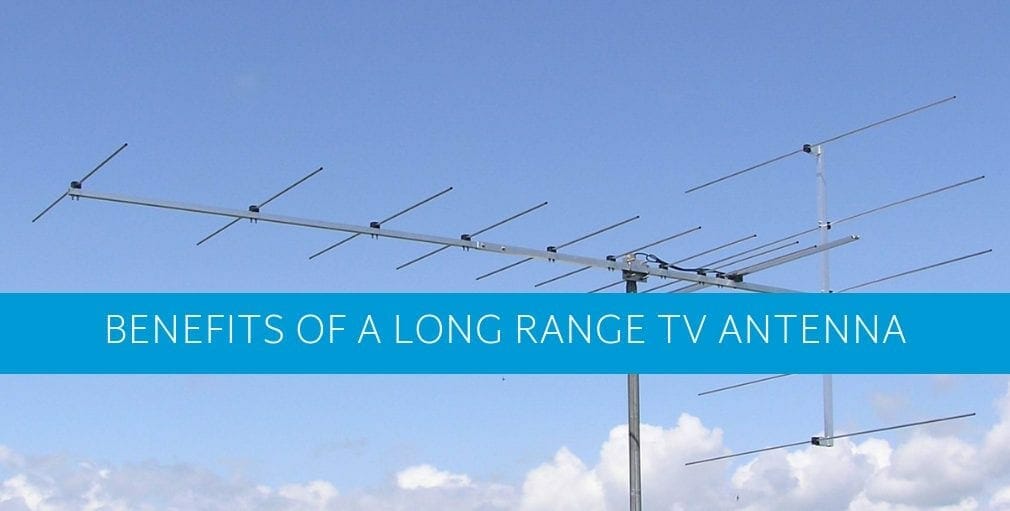When it comes to TV antennas, there are a few dilemmas. Do you go for a cheaper one with less range, or do you spend a bit more but get something that has a lot of range? Do you get an omnidirectional antenna that gets a lot of different signals at the cost of range, or do you get a directional one that has a lot of range but can only receive a signal from one tower?

The answers to all of these questions often depend on your specific situation, but there’s one thing that’s often more common than you’d think – the need for a long-range TV antenna. It’s particularly a favorite of users who live in rural areas, where the broadcast towers are often far away, and you need the range.
But why so much love for that particular type of TV antenna? Let’s take a look at some of the benefits of a long-range TV antenna and see why people favor it over the other types.
Pros and Cons Summary
There are several potential advantages and disadvantages to using a long-range television antenna:
Pros:
- Long-range antennas can pick up signals from distant transmission towers, making them ideal for use in rural areas or other locations where the signal strength may be weaker.
- Long-range antennas are typically more powerful than shorter-range antennas, which means they can pick up a wider range of channels and may be able to receive a clearer, more stable signal.
- Long-range antennas are generally more durable and weather-resistant than shorter-range antennas, making them a good choice for use in harsh weather conditions.
Cons:
- Long-range antennas are typically larger and more expensive than shorter-range antennas, which may be a drawback for some users.
- Long-range antennas may require more complex installation and setup and may need to be mounted on a rooftop or other high location to get the best signal.
- Long-range antennas may be more prone to interference from surrounding objects, such as trees, buildings, and other structures.
- Long-range antennas may not be suitable for use in urban or suburban areas, where the signal strength is typically stronger, and a shorter-range antenna may be sufficient.
It’s worth noting that the performance of a long-range antenna can vary significantly depending on the specific model and the local signal conditions, so it’s important to do your research and choose a high-quality antenna that is well-suited to your needs.
They Have a Lot of Range.
The first benefit is very obvious – it’s the range itself. Many users live in rural areas than you’d think, and not all have a broadcast tower nearby. Some even live as much as 120 miles from their nearest tower. In these situations, unless you have a long-range TV antenna, you’re getting no signal at all.

When it comes to long-range TV antennas, there’s somewhat of a standard for the good ones, where the range is usually 150 miles.
Take this with a grain of salt, though, as you’ll only get those 150 miles in absolutely perfect conditions with no interference.
Since this is seldom the case, the more realistic number you can expect is usually around 110 to 130 miles, which is still outright impressive.
The signal strength is another advantage.
Let’s say you aren’t one of those users who lives 120 miles away from their nearest tower. Let’s say you’re receiving the signal from 60 miles away. If this is you, you might be thinking, “I’ll save some money and get a 75-mile range antenna – it still has 15 miles to spare for bad weather and interference”, and to some extent, you’d be right.
However, what happens when there’s really bad weather or a lot of interference? You’ll push your antenna to the limits, and chances are you’ll have a less-than-stellar TV-watching experience.
Enter the long-range TV antenna. With a 150-mile range, even truly bad weather or plenty of interference can take out no more than 50 miles of range from the maximum, which still leaves you with 100 miles.
If your broadcast tower is 60 miles away, you’ll receive full signal quality with absolutely no losses. Wouldn’t you prefer this to have a shaky connection that might drop any minute?
With the Small Price Difference, It’s Usually a No-Brainer
When looking at good, higher-end TV antennas, the price difference between short-range and long-range TV antennas is often fairly small. With the benefits we discussed above, it’s not a tough choice to make.
Even if you don’t need the range, and the broadcast tower is close to you, you still know that even if the weather is disastrously bad, you won’t notice a difference when you’re watching TV. This makes the price difference very well worth it.
And even if you aren’t looking at the high-end models, you can still find good long-range TV antennas that don’t cost too much. They may not have 150 miles of range – they’ll top out at 100, for example, and they may not have additional features such as a built-in amplifier or a motorized, rotating base. But they’ll still perform admirably, and you’ll get the benefits we discussed.
Final thoughts
While debating whether to get a short-range or a long-range TV antenna, there aren’t hundreds of benefits. There are two main ones, but both are compelling reasons to spend the extra money. If you want peace of mind and think you may use the extra range once in a while, the benefits of a long-range tv antenna far outweigh the minimal price difference.

